Ahrefs reports that a staggering 66% of all web pages have zero backlinks.
Talk about a missed opportunity, right?
That’s precisely why we’re now diving into the lesser-explored depths of off-page SEO.
In this guide, we’ll be covering:
- The essential elements of off-page SEO for 2024
- How to find and disavow toxic links
- How to effectively manage your online reputation through citations, reviews, and blog comments
- And more!
But first, let’s discuss what sets off-page SEO apart from on-page and technical search engine optimization.
Link building cheat sheet
What is an Off-Page SEO Checklist?
An off-page SEO checklist is a roadmap for optimizing your website’s external factors that influence search engine rankings.
It’s all about building your site’s reputation and authority through backlinks, social media presence, and other digital marketing strategies.
Now, how does off-page SEO differ from its siblings, on-page and technical SEO?
On-page SEO focuses on optimizing content and HTML elements on your website to make it more search-engine-friendly.
It deals with keyword usage, meta tags, and content structure.
Technical SEO, on the other hand, revolves around improving your site’s infrastructure, such as core web virtals, mobile-friendliness, and crawlability, to provide a seamless user experience.
Off-page SEO, in contrast, is all about enhancing your website’s credibility, visibility and brand awareness beyond your site’s boundaries through link building, guest blogging, brand mentions, and, of course, reviews.
It’s like weaving a strong web of quality connections that ultimately lead back to your site, helping it climb the search engine ladder. Is also often outsourced to an SEO service because of how big of a time sink it is.
So, armed with this understanding, let’s dive into the world of off-page SEO and unlock the secrets to boosting your online presence.

Backlink Profile Analysis
A backlink profile is a collection of all the inbound links pointing to your website from other sites.
It’s a key component of off-page SEO, as search engines view these links as votes of confidence, indicating your site’s credibility and authority.
Use tools like Ahrefs, Moz, or SEMrush to collect data on your site’s backlinks.

These tools provide comprehensive insights into your link profile, including total backlinks, referring domains, and anchor text distribution.
Not all backlinks are created equal. Focus on high-quality, relevant links from reputable websites.
Keep an eye out for spammy or low-quality links that can harm your site’s reputation, and consider disavowing them through Google Search Console.
A healthy link profile is diverse, with links coming from various sources such as blogs, news sites, forums, social media, and, of course, natural internal links.
Next, check your anchor text distribution.
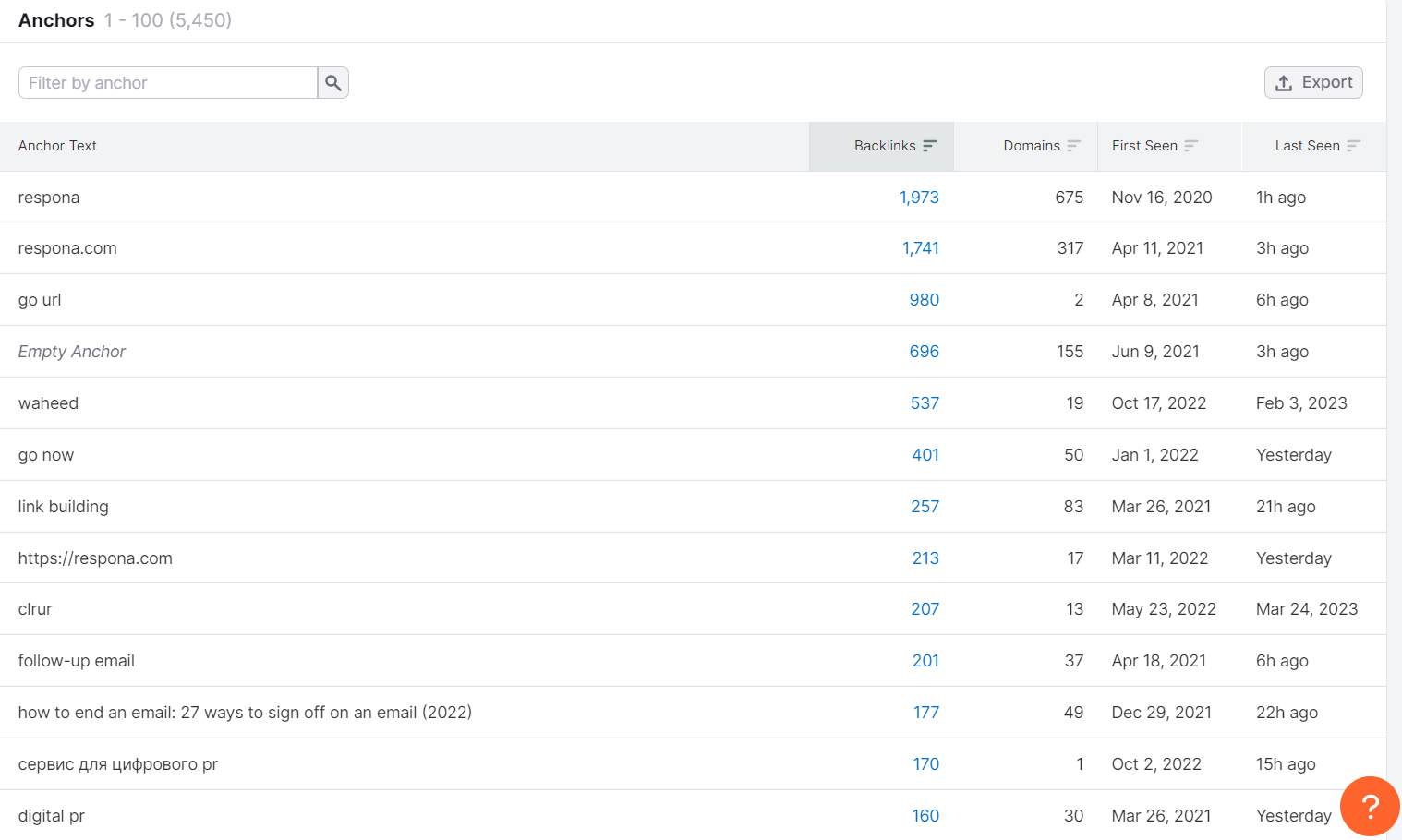
Anchor text is the clickable text in a hyperlink.
A natural distribution of anchor texts, including branded, keyword-rich, and generic variations, is crucial to avoid over-optimization.
Regularly monitor your link profile to identify and rectify any lost or broken link lists, ensuring your site maintains its authority.
Keep track of your link profile’s growth over time to gauge the effectiveness of your off-page SEO efforts.
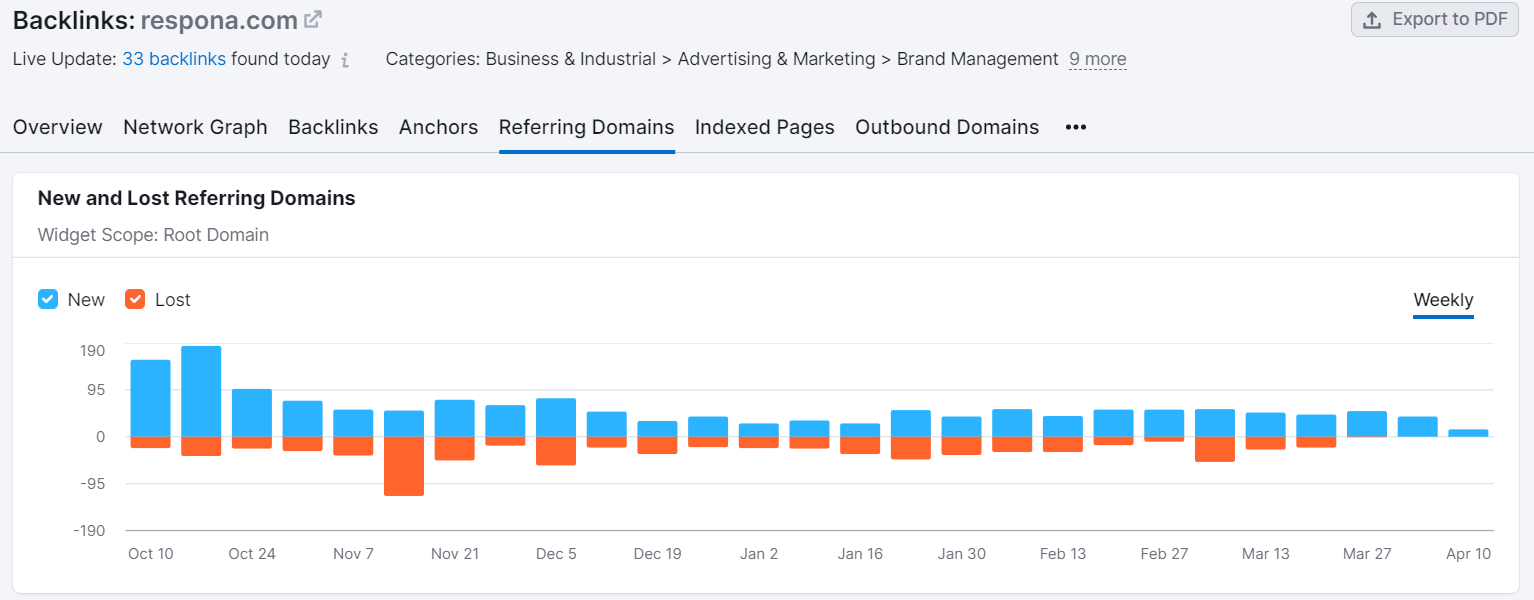
A consistently growing profile indicates that your strategies are working and your site is gaining authority.
Don’t limit your off page site audit to just your own website.
Perform a similar backlink audit on your competitors’ backlink profiles to uncover their link-building tactics.
This will help you discover potential link-building opportunities to leverage.
Disavow Toxic Links
After completing your link audit, create a list of low-quality or spammy backlinks that you want to disavow.
These can include links from irrelevant, low-authority, or suspicious websites.
Create a plain text (.txt) file containing the list of toxic backlinks or domains to be disavowed.

Each URL or domain should be on a separate line, and you can include comments by starting the line with a pound sign (#).
To disavow an entire domain, use the format “domain:example.com”.
Log in to your Google Search Console account and navigate to the “Disavow” tool.
Then, use Google’s Disavow Tool:
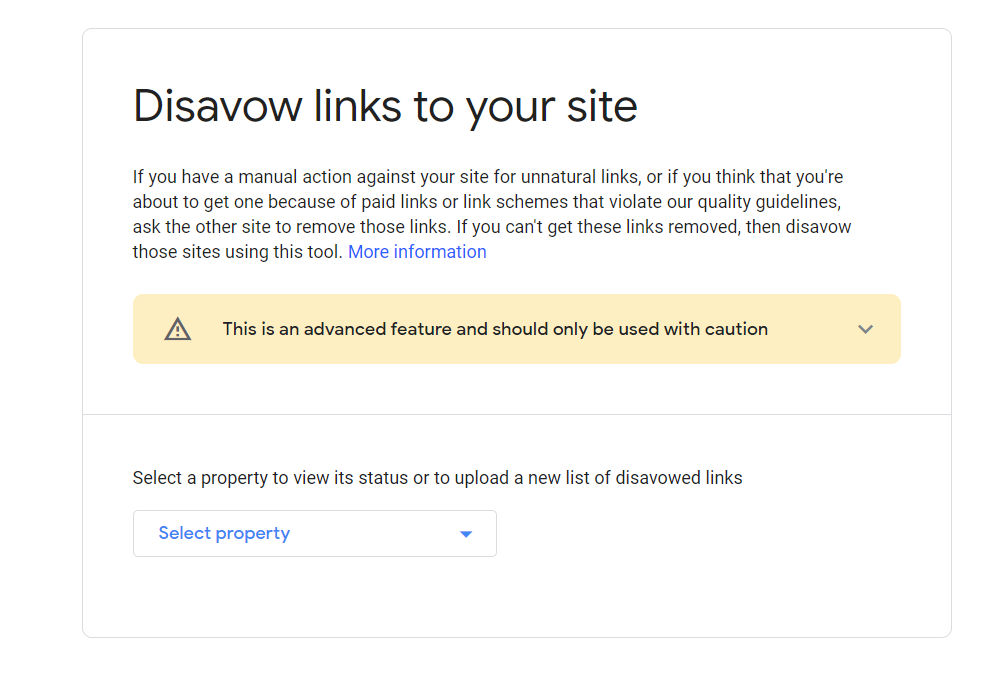
Domain Authority (DA) and Page Authority (PA)
Domain Authority (DA) and Page Authority (PA) are metrics developed by Moz to predict how well a website or specific page will rank on search result pages (SERPs).
DA represents the overall authority of a domain, while PA focuses on the authority of an individual web page.
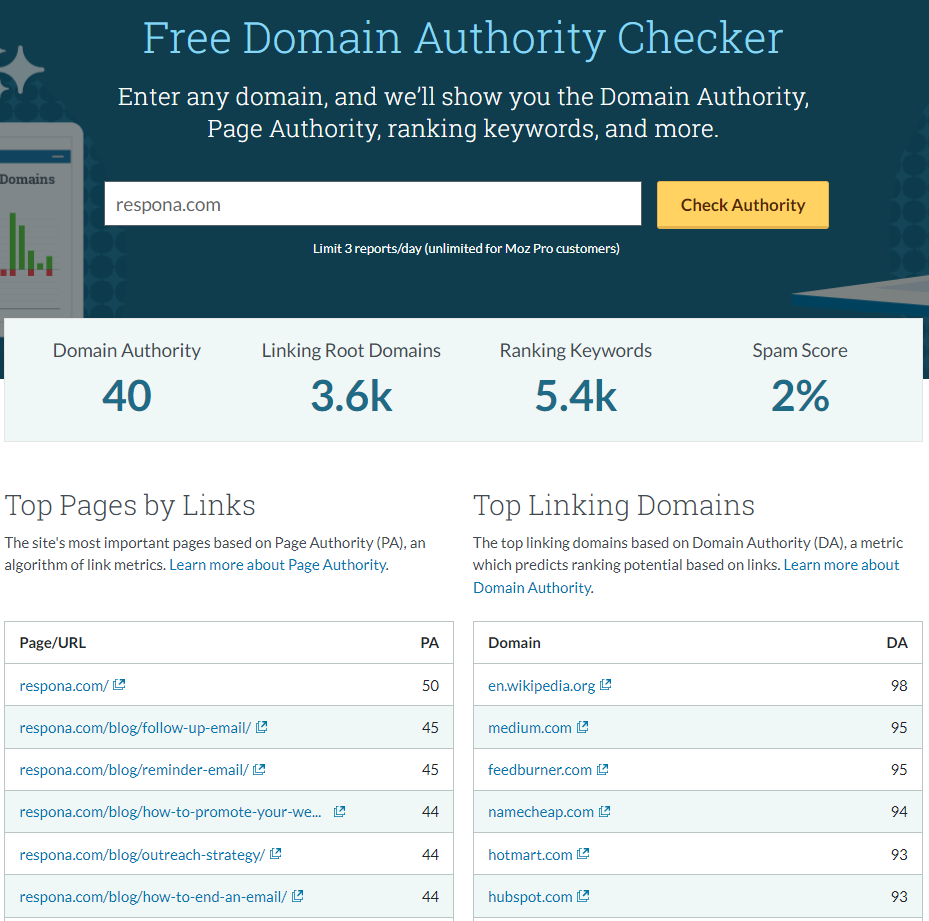
DA and PA scores range from 1 to 100, with higher scores indicating greater authority and potential to rank well.
Compare your scores to those of your competitors to understand your site’s relative performance.
A lower DA or PA score can be due to various factors, such as a low quality backlink profile, poor on-page optimization, or technical issues.
Analyze your site’s weaknesses and devise a plan to address them.
Citations
Online citations are mentions of your business’s name, address, and phone number (NAP) on various websites, such as directories, review sites, and social media platforms.
Citations play a crucial role in local SEO, as they help search engines verify your business’s existence and boost its credibility.
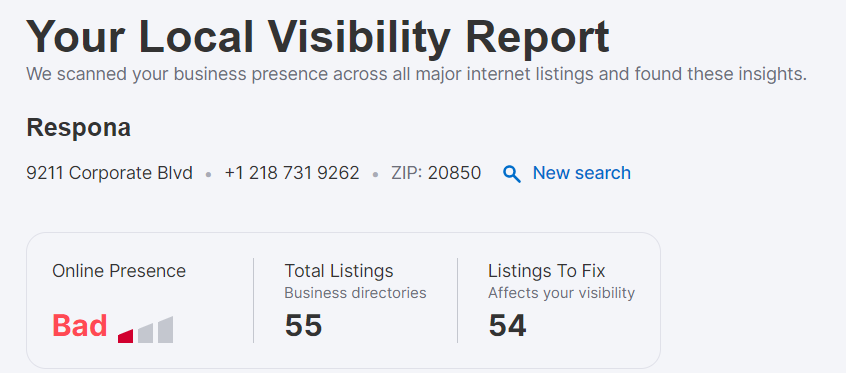
Start by creating a list of all the known citations for your business.
This can include local and industry-specific directories, social media platform profiles, and review sites.
Tools like Moz Local, BrightLocal, or Whitespark can help automate the process of finding and assessing your citations.
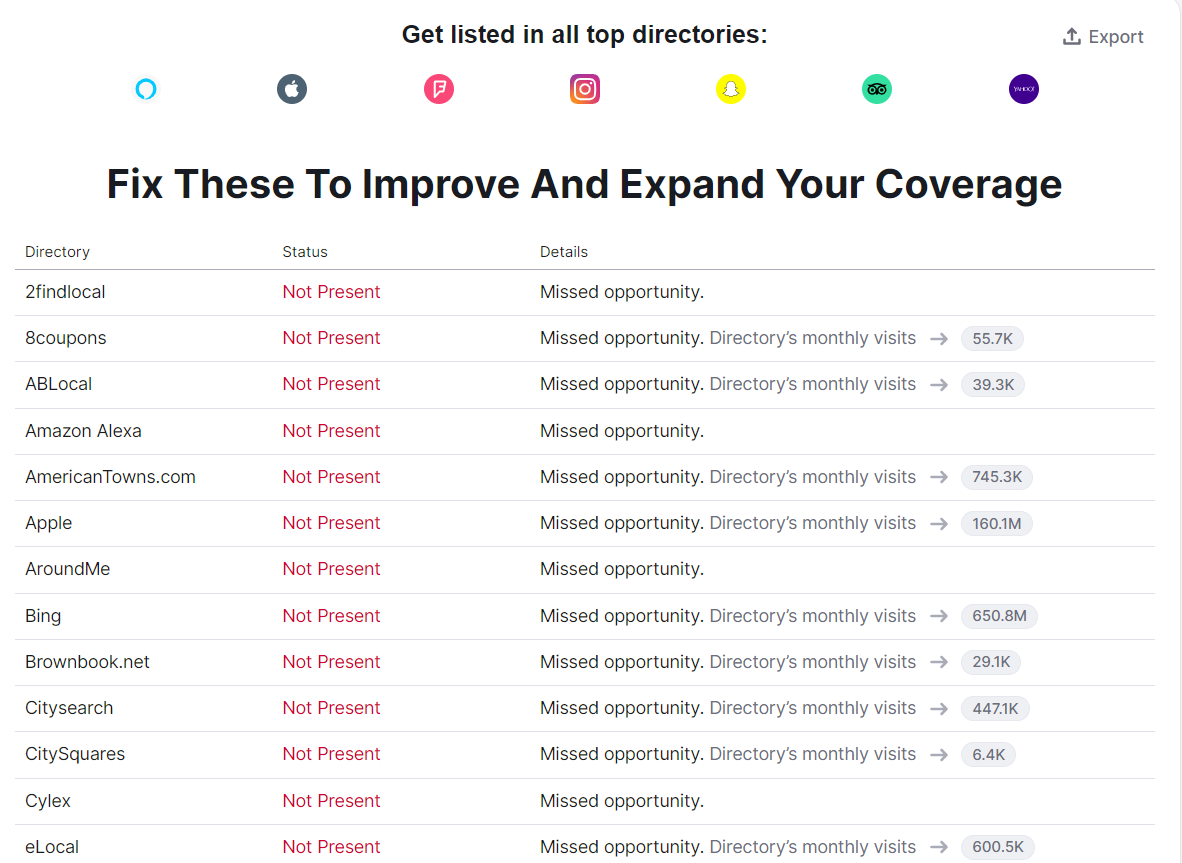
These tools will identify inconsistencies, duplicates, and missing citations, providing you with valuable insights.
Ensure your NAP information is accurate and consistent across all citations.
Inconsistencies can confuse search engines and negatively impact your local SEO strategy.
Look for additional citation opportunities by analyzing your competitors’ citation profiles.
This can reveal new directories or platforms to target.
Reviews
Auditing your business’s online reviews is essential for managing your online reputation and addressing customer feedback.
First, determine the platforms where your business has reviews, such as your Google business profile, Yelp, Facebook, G2, or industry-specific websites.
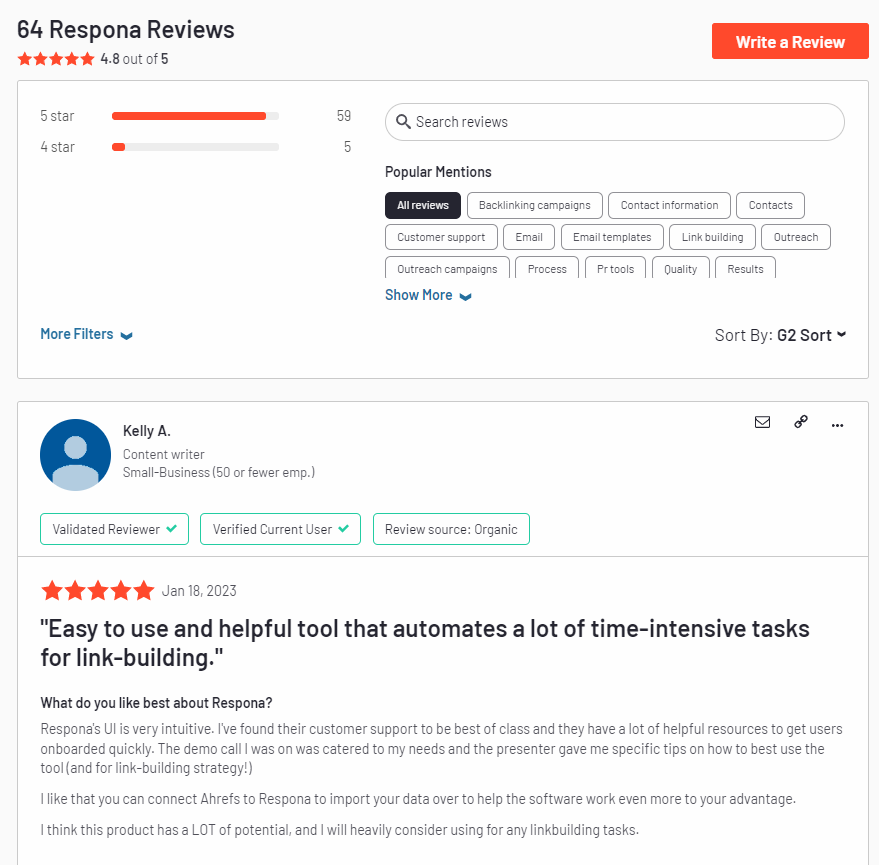
Examine your overall star rating, the number of reviews, and any trends or patterns in customer feedback.
This will help you understand your business’s strengths and areas for improvement.
Set up notifications or use review monitoring tools to stay informed about new reviews.
Timely responses to customer feedback demonstrate your commitment to customer satisfaction.
Handling negative reviews is an important skill to master, even if the person who left it wasn’t being objective.
It may be tempting to simply delete or disregard them, but spending the time to respond to every such review will make you look more professional.
When handling bad reviews:
- Avoid getting defensive or confrontational.
- Recognize the customer’s concerns and show empathy.
- If possible, propose a solution to remedy the situation or invite the customer to contact you privately to resolve the matter.
- Use negative reviews as an opportunity to improve your product or service.
It’s also important to encourage positive reviews.
Do so by placing reminders on your website, social media, inside your software or through email campaigns.
Positive reviews help balance negative ones and boost your business’s overall reputation.
Blog and Forum Comments
Auditing blog and forum comments is essential for gauging audience engagement.
While these don’t have a direct impact on your search engine ranking, it’s still worth checking up on your audience every now and again to measure their outlook on your business.
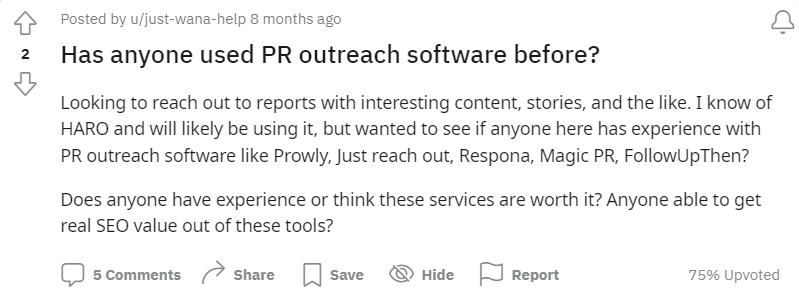
First, compile a list of industry-specific blogs and forums where your target audience is active, and where you or your audience may have left comments that include brand mentions or link back to your website.
Evaluate the quality and relevance of the comments related to your brand, products, or services.
This is simple: positive = good; negative = bad.
Respond to comments and participate in discussions to establish a more human connection with your audience.
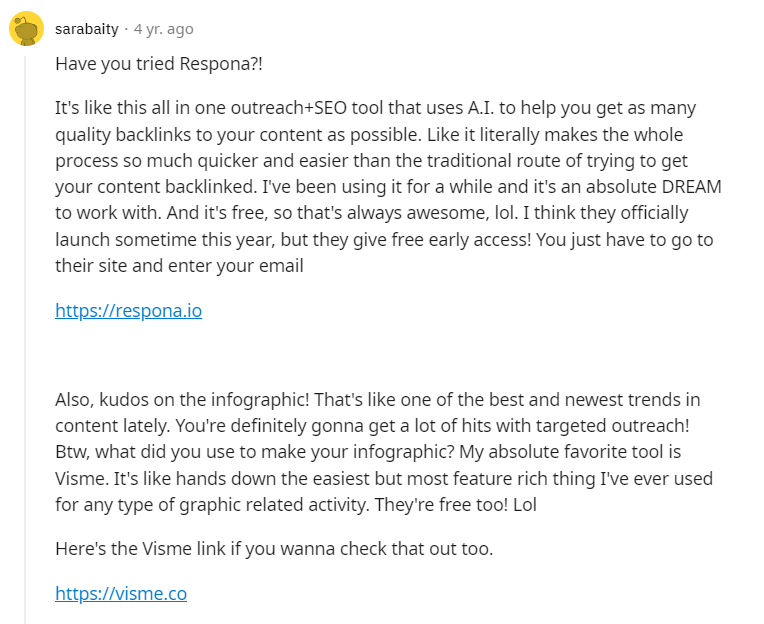
This can lead to increased engagement, stronger relationships, and even high quality backlink opportunities.
Local SEO
If you have a brick-and-mortar business or a physical location of your office, it’s important to make sure your website drives local foot traffic to your door.
First things first, ensure your Google Map listing is claimed, accurate, and up-to-date, with correct NAP (name, address, phone number) information, business hours, and categories.
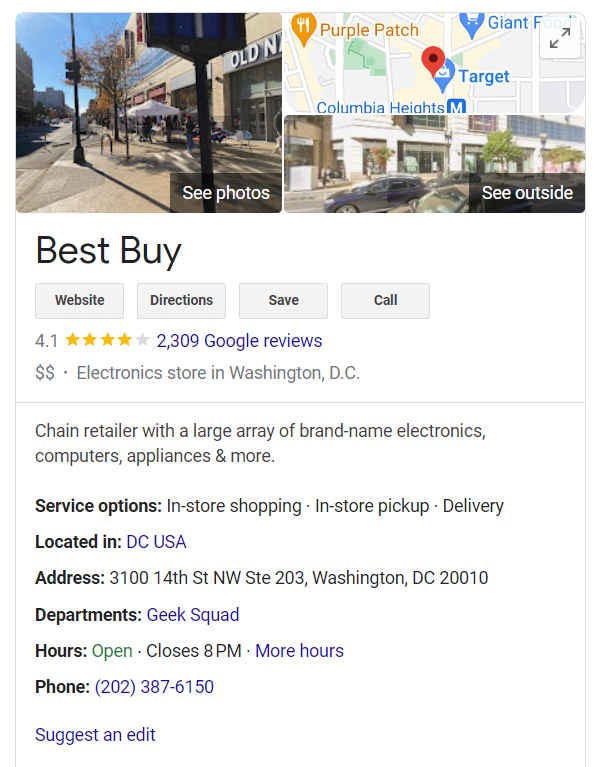
Add high-quality photos, regularly post updates, and encourage customers to leave reviews. Monitor and respond to reviews in a timely manner.
Next up, you’re going to need locally-relevant content on your website.
Conduct keyword research to discover relevant local keywords (e.g., “plumber in [city]”) and incorporate them naturally into your website’s content, meta description, and URLs.
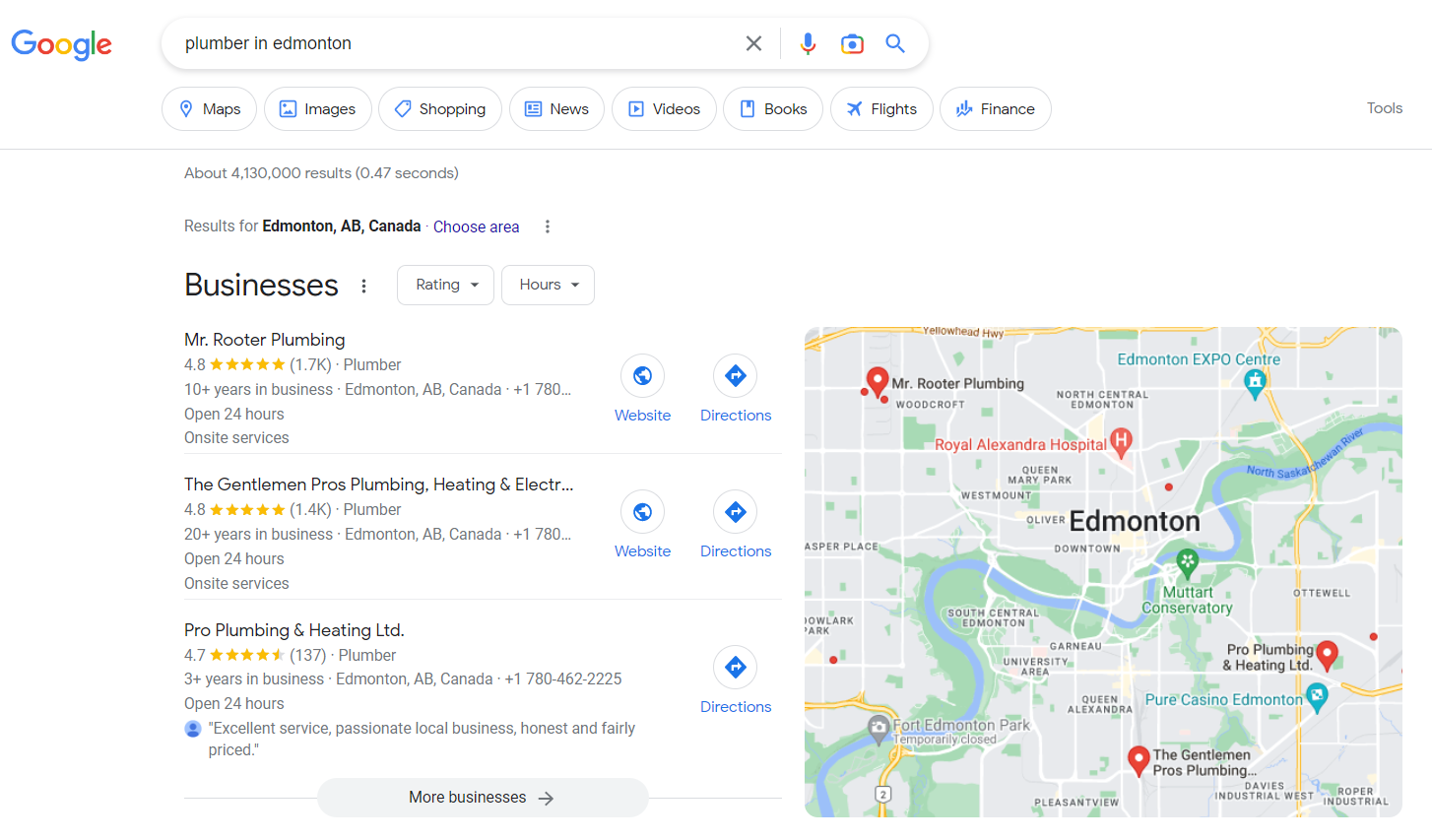
However, don’t write it for the sake of covering as many keywords as possible. Ensure your content is informative, engaging, and actually valuable for your target audience.
Local links can also have immense value in driving targeted traffic.
Reach out to local influencers, businesses, and bloggers and collaborate on projects to increase your local link profile.
Alternatively, you can opt in for the help of local SEO services if you need help.
Social Media Presence
While social media marketing is a separate beast of its own, having a strong presence on your audience’s favorite platform can be a lucrative way to bring more visitors to your site.
Nothing screams “amateur” louder than a haphazard social media presence.
Ensure your brand’s voice, visuals, and messaging are consistent across all channels.
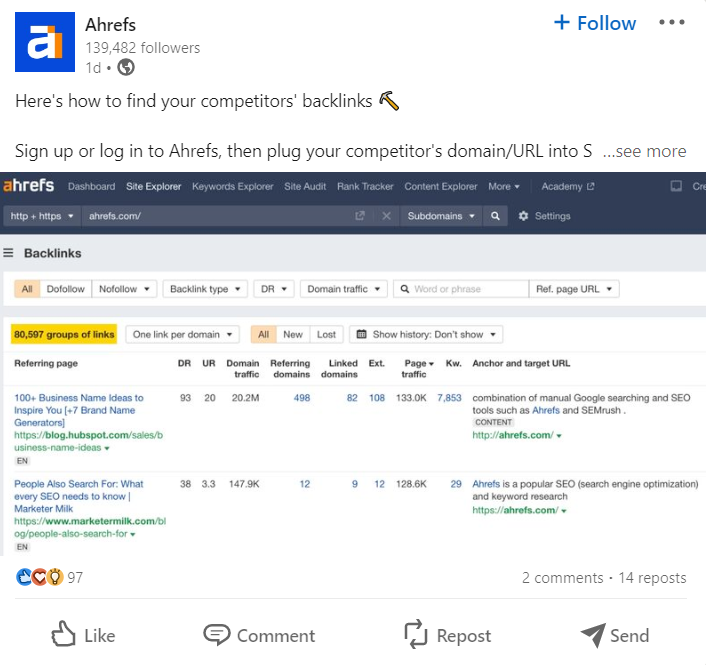
This helps to build familiarity and trust with your target audience.
Your followers also don’t want to be bombarded with content marketing 24/7.
Share valuable content, ask questions, and respond to comments.
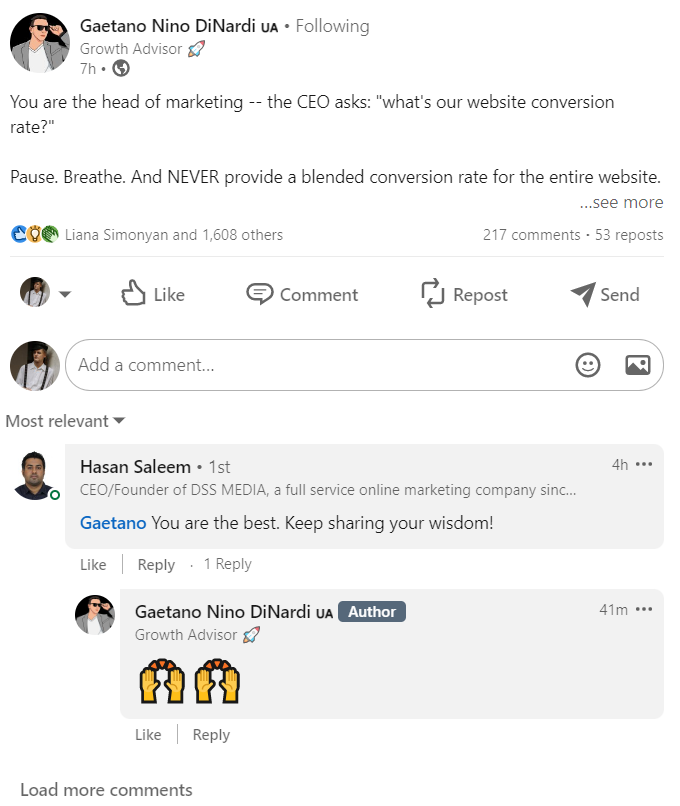
This not only builds relationships but also signals to search engines that you’re a brand that people care about.
They are literally called “social signals” – things like likes, retweets, and reposts.
Remember, engagement is the currency of social media.
Take a peek at what your competitors are doing. Identify their strengths and weaknesses, and see how you can fill the gaps.
Are they killing it on Instagram but barely surviving on Twitter?
That’s your cue to swoop in and dominate that platform.
Link building cheat sheet
Now Over to You
This concludes our 3-piece guides to running on-page, technical, and off-page SEO audits.
As you dive into the depths of off page SEO (or seek to polish your existing SEO tactics), don’t miss out on Respona’s 14-day free trial.
Designed for link building and guest posting, Respona can help solidify your off-page SEO efforts, or help you scale up without spending too much time.
Frequently Asked Questions (FAQ)
What is the purpose of an off-page SEO audit?
An off-page SEO audit helps you assess the factors that influence your website’s search engine rankings beyond your site’s content and technical aspects.
This includes evaluating your backlink profile, social media presence, and other external signals that contribute to your online reputation and authority.
How often should I conduct an off-page SEO audit?
It’s advisable to perform an off-page SEO audit at least twice a year, or more frequently if you’re actively working on improving your off-page SEO efforts.
Regular audits help you identify areas of improvement, monitor your progress, and stay ahead of your competition.
Do I need any specific SEO tool to run an off-page SEO audit?
While you can gather some off-page SEO data manually, using dedicated tools can significantly streamline the process.
Tools like Google Analytics, Ahrefs, SEMrush, and Moz can help you analyze your backlink profile, track social media engagement, and monitor your overall off-page SEO performance.
How long does it take to see results after an off-page SEO audit?
The time it takes to see results after implementing changes from an off-page SEO audit can vary depending on factors like the competitiveness of your niche and the effectiveness of your strategies.
However, typically, you can expect to see noticeable improvements within 3-6 months, as off-page SEO factors like backlinks and social media presence take time to develop and impact your rankings.
Can I perform an off-page SEO audit myself, or should I hire an expert?
While it’s possible to conduct an off-page SEO audit yourself, it may be beneficial to hire an expert if you lack the time, knowledge, or experience in performing comprehensive audits.
An expert can provide valuable insights, recommend effective strategies, and save you time, ultimately helping you achieve better results in your off-page SEO efforts.






